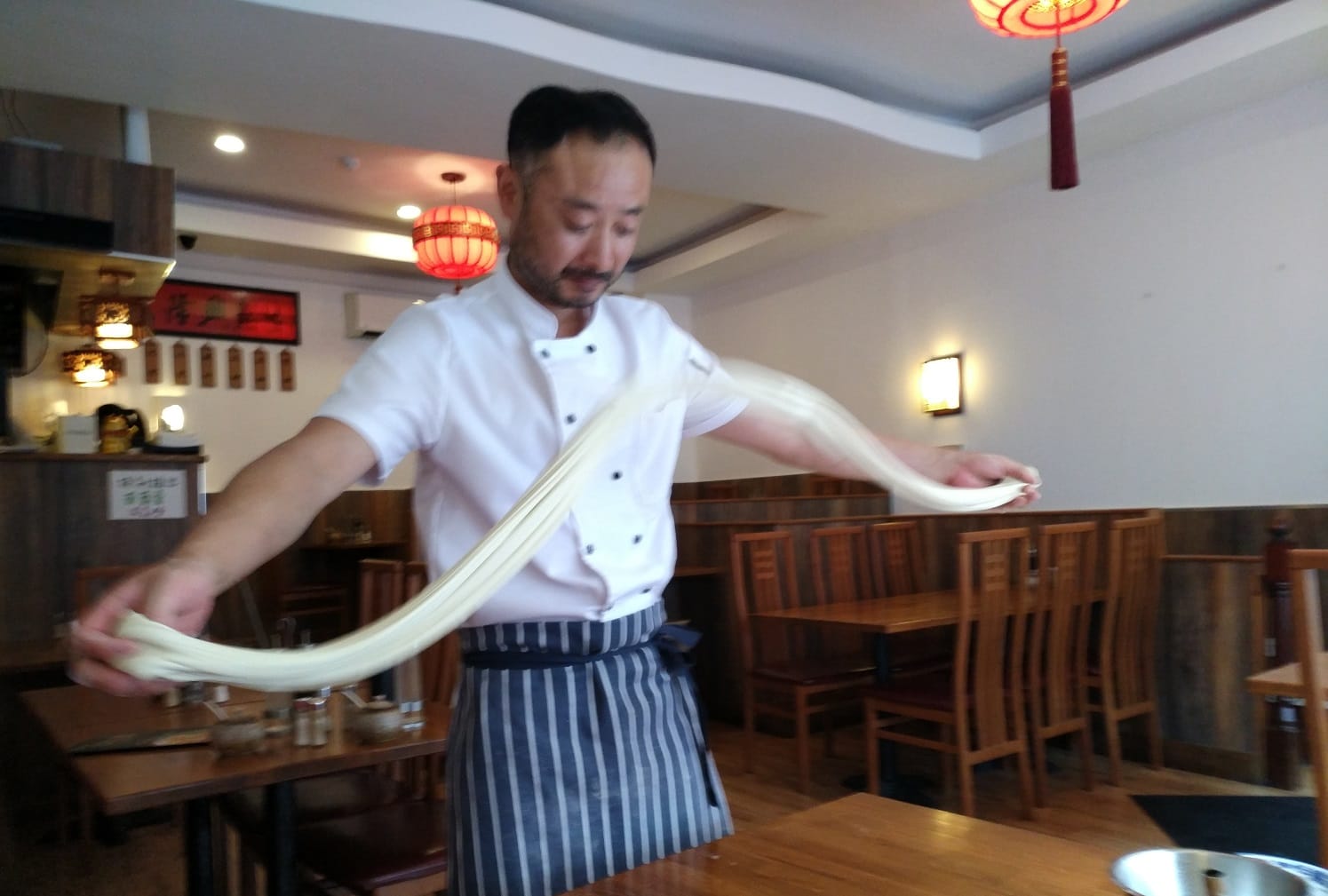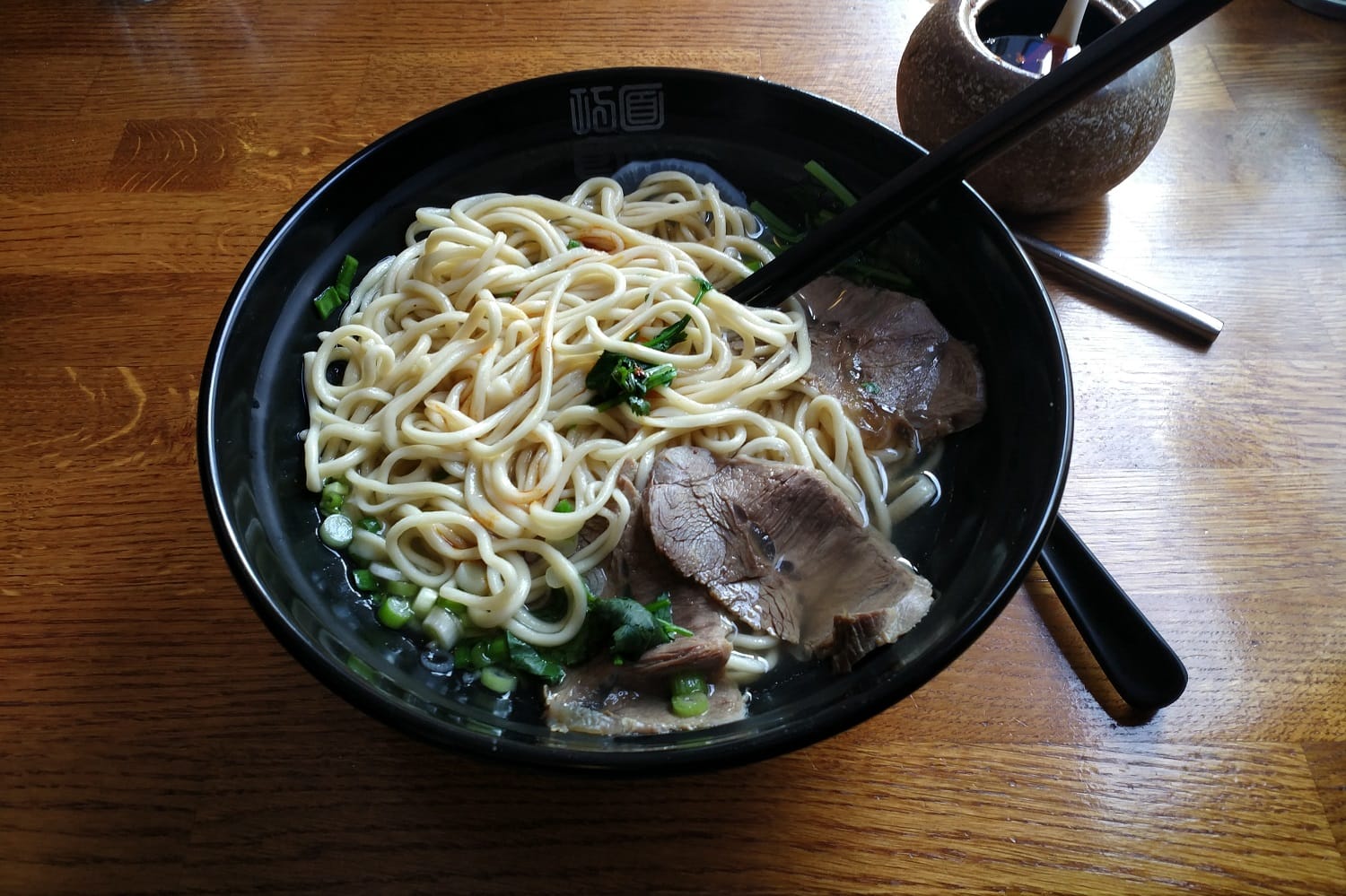What’s the best way to tell area residents about plans for a new asylum shelter nearby?
The government should tell communities directly about plans for new asylum shelters, some activists and politicians say.
A chef makes noodles the old fashioned way – with his bare hands.

The noodles at Lee’s Charming Noodles aren’t just charming, they’re also somewhat mysterious.
They’re also no longer Lee’s noodles. The Parnell Street restaurant has been owned by Jie Liu since 2017, but he’s kept its original name.
In any case, Jie Liu won’t let strangers into his kitchen to see how they’re made. “That’s confidential,” he says.
Instead, he pulls two of the restaurant’s tables together, and runs to get a tin bowl of oil, a small ceramic bowl of flour, and a big chunk of dough.
His restaurant is the only place in Dublin that has hand-pulled noodles, Liu says – something that would be enjoyable to try to confirm for sure, but tough to do.
A lot of work goes into them.
Liu looked for a restaurant for years before he found this place, he says.
He’d been working for a transport company, his days spent travelling up and down the country, longing for independence.
“It’s not something I enjoyed,” he says, sitting across the table in the restaurant, in a chef’s white top.
When he heard the previous owners were looking to sell, he jumped at the opportunity.
Parnell Street is the perfect location, says Liu. There are quite a few Chinese people in the area, and loads of others come to visit, looking for new foods to try out.
Before Liu came to Ireland in 2001, he trained as a noodle chef in Dalian, his hometown in northeast China.
Hand-pulled noodles are common street food there, he says. His job had been to pull dough into shape, day in, day out.
Unlike in his restaurant on Parnell Street, where Liu not only pulls the noodles but also gets a say in all the dishes, those cooking street food in China have highly specialised roles, says Liu.
One person to pull the noodles. One person to chop the vegetables. One person to boil the noodles. “It has to be two minutes for each bowl,” says Liu.
His training was pulling the noodles for each and every bowl. There’s a lot of upper body strength involved, says Liu, flexing his arms.
You have to be strong to be a noodle chef, says Liu.

Laid out on the table is everything that Liu needs to make noodles: the dough, flour, oil, and most importantly, his hands.
He slaps the dough hard against the table. He picks it up, grabs the ends, and swings it in a circular motion – the dough circle getting larger and larger, his arms pulling outwards as he swings, expanding the dough.
Occasionally, he lets it slap the table in a slow beat. All the while, he wears an intense look of concentration.
Liu throws the rolled dough onto the table scattered with flour, brushes it with oil, tears two chunks from each end and then flattens the original dough.
He presses the dough flat, apart from a triangular ridge running through its centre, and stretches it again into a circle, his right hand pulling the mass of the dough, his left fingers threading it like string as he pulls and swings the dough – so quick it’s impossible to track his technique.
It takes about two minutes for Liu to finish. When he’s done, he stops and folds the finished noodles into a U shape about a metre long on the table, showing off his work.
They can be stretched into any shape, says Liu. He picks up some more dough and sets about showing how to pull triangular-shaped noodles.
When he’s finished, he looks up and smiles. “That’s why it’s a hard job. For every one [dish] it’s the same,” he says.
When he came to Dublin, Liu longed for the hand-pulled noodles he spent his days making in China, he says.
Noodles in the city were all made by machine, says Liu. “The machine makes noodles a little bit soft.”
Handmade noodles are harder, with a little more bite, he says.
The restaurant on Tuesday late afternoon is quiet. Indistinct pop music on the stereo. Two red Chinese lanterns hang from the centre of the ceiling. There are tables for 10 to 12 different dining groups.
After Liu is finished pulling the noodles, he cooks them up in the kitchen, dunked in an enormous bowl of beef soup.

Soup should have five different colours, says Liu, pointing at each of the ingredients in the soup.
Green coriander and spring onion. Tick. Yellow noodles. Tick. Clear broth and white radish. Tick.
Hmmm, mutters Liu, peering into the bowl for the last colour. He’s lost for a second, before pointing to the ceramic bowl of chili oil on the table, relieved. Red.
Why the five colours? Liu shrugs his shoulders. “It’s just tradition. It’s not something even Chinese people know,” says Liu.
But, says Liu, people in Lan Zhou might know. It’s the home of this dish.
The soup has a fresh citrus smell. The noodles are soft with a delicate bite. The beef is cut into thin slices from the shank, and melty tender and rich.
Happy slurps echo through the restaurant. There’s spoons and chopsticks.
“We don’t care how people eat,” says Liu, as long as they enjoy it.